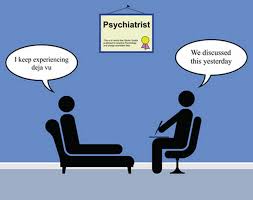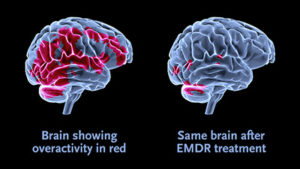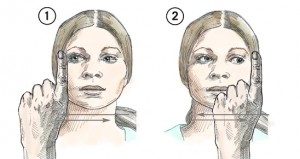If you have lived with the debilitating effects of chronic stress, and you want to experience real change, then you need to read this article. Here, I will help you discover how you can achieve a remarkable transformation from the crippling effects of a chronic stress condition and live a healthy, more deeply satisfying way of life.
In the first of my two articles – The Real Enemy – Chronic Stress – I gave a general introduction to the concept of Chronic Stress, whilst in the second – The Dynamics of Change Part One – I outlined the origins of the stress condition and showed how it becomes chronic.
In this article, I will introduce you to a revolutionary approach to healing that finally deals with the effects of untreated trauma and helps you return to the natural state in which you are meant to live.
From the first two articles, we know that our ability to effectively manage stress is dependent on how well our internal regulatory system operates. We are equipped with a smooth self-regulating system that normally helps us deal with situations in which we feel at risk. However, when our ability to respond to a perceived threat is overwhelmed, then chronic stress is the usual result. In other words, whenever something happens that you are unable to process and leaves you distressed, with symptoms that just won’t go away, you have a trauma response. This can arise from a single event or ongoing events that occur over a period of time.

To understand how we treat chronic stress we need to revisit the way that the brain processes the distress that we experience. Imagine you got attacked by someone wearing a red jumper. The amygdala, the brain’s fear centre, which instantly decides if something threatens your survival, may code red jumpers as dangerous. We can think of the amygdala as a Polaroid camera that takes a single, blurry snapshot to record a complex experience. Then the hippocampus, which gives events a beginning, a middle, and end and links to the larger context of memory, takes a high megapixel, quality video recording with a stamp date. Ten years later the amygdala senses a red jumper in the incoming information stream, goes crazy and triggers life or death responses. The hippocampus should come along and put a brake on, saying ‘hold on, that was 10 years ago!’ Trauma is a failure of the high megapixel hippocampus to update the blurry Polaroid amygdala to the present. This explains why many people feel confused when inside of us alarm bells are ringing and yet there is no obvious sign of danger.

What implications has this for recovery from chronic stress? When people turn to talk therapies to help them deal with the ongoing effects of trauma, the part of the brain that is targeted in these interactions, the hippocampus, is precisely the part that is supressed during traumatic threat. Thus, we either don’t remember all the pertinent facts or we talk about them in a detached way, giving the ‘details’ of the events but minus the emotions and body sensations. You may develop new insight and understanding of what has happened in the past but changing the reaction has to come from a different kind of therapy. So, rather than trying to talk through the problem, the processing needs to occur on a physiological level and allow new associations, insights, and emotions to emerge spontaneously.
One of the most successful treatments to follow this approach is Eye Movement Desensitization & Reprocessing (EMDR). In 2013 the World Health Organization stated that trauma-focused EMDR therapy and CBT are the only psychotherapies recommended for children, adolescents, and adults with Post Traumatic Stress Disorder (PTSD)

EMDR is based on the premise that people naturally move towards health and, given the opportunity, the brain knows how to heal on its own. It has integrated aspects of talk and body therapies into a method that helps promotes more activation in the limbic regions of the brain so that you can identify and reprocess old ‘stuck’ memories and conditioned body responses. A useful metaphor is to imagine a child, who is scared, confused and on his own, being linked up with an older wiser adult who can reassure him and help explain and make sense of what’s happening. The child can then relax, and see, and feel his situation differently. When traumatic memories have been cleared and everything in your system is working efficiently, the brain can take in information, sort it accurately, and process it into long-term memory.
As a psychotherapist I never like to recommend a treatment to clients until I have first tried it for myself, so, shortly after I first heard about EMDR, I began to work with an EMDR therapist. In treatment I identified one memory that still triggered a great deal of shame and feelings of inadequacy. It concerned the time when I was 13 years of year and coming out of a cinema with my younger brother. Suddenly I was set upon by two youths, who began to punch me in the face. I immediately froze and stood there while the blows rained down. I made no effort to defend myself or fight back. After a while, the two boys lost interest and walked away, taunting me as they left. What really hurt me was not the punches, as, strangely, I felt no pain from these. The hurt, rather, came from the interpretation I put on my actions, or rather inaction. I judged myself cowardly and weak for not fighting back and the fact that all this was witnessed by my younger brother further compounded my shame.

During the EMDR my therapist helped me identify the image that represented the worst part of this incident and the resultant negative beliefs and feelings about myself. I also located where in my body I felt the disturbance. All this provided an entry point into those locked traumatic memories, in order to begin the reprocessing. My therapist then began to use a technique known as bilateral stimulation, in this case eye movements, in order to activate my brain so that it could begin to process and integrate these memories in a more adaptive way. The main learning that emerged for me was that I really had no choice about the way I reacted to the physical attack. The freezing response from the amygdala was hardwired from earlier experiences of violence and overrode even the reflex action to put up my hands to defend myself.
Research has shown that the freezing response, called tonic immobility, has evolutionary purposes in that it increases the likelihood that predators lose interest in ‘dead’ prey, affording the possibility of escape. It also has an analgesic effect, which helps numb the body and mind to any physical pain and fear. And, in my case, it worked! My attackers lost interest and walked away and I felt no physical pain from the attack. So, of course, each time the defensive posture worked, the more likely it was to be used again and again. And the more powerless I was to stop my hardwired, instinctive response to threat.

I began to realize that my system was doing the best it knew how to protect, and look after me. Understanding this, I began to have more of an appreciation for myself and my inbuilt responses. I also realized that the trigger for this response were attacks that was sudden and unexpected. I began to remember other situations where there was danger posed not for myself but rather for others where I had shown remarkable degrees of bravery. New learning and meaning thus began to emerge and the old memories no longer had the emotional charge that was so disturbing before the therapy. I still didn’t like what had happened but I was no longer defined by the memory. I knew different and, importantly, I FELT different.
These results have been replicated in my work with clients and recovery happens in a much reduced time frame. Thus I can say with certainty that you no longer need to struggle on with the debilitating effects of chronic stress. There is a solution and IT WORKS!
If you want to find out more about any aspect of chronic stress, and its treatment, EMDR, you can contact me here
